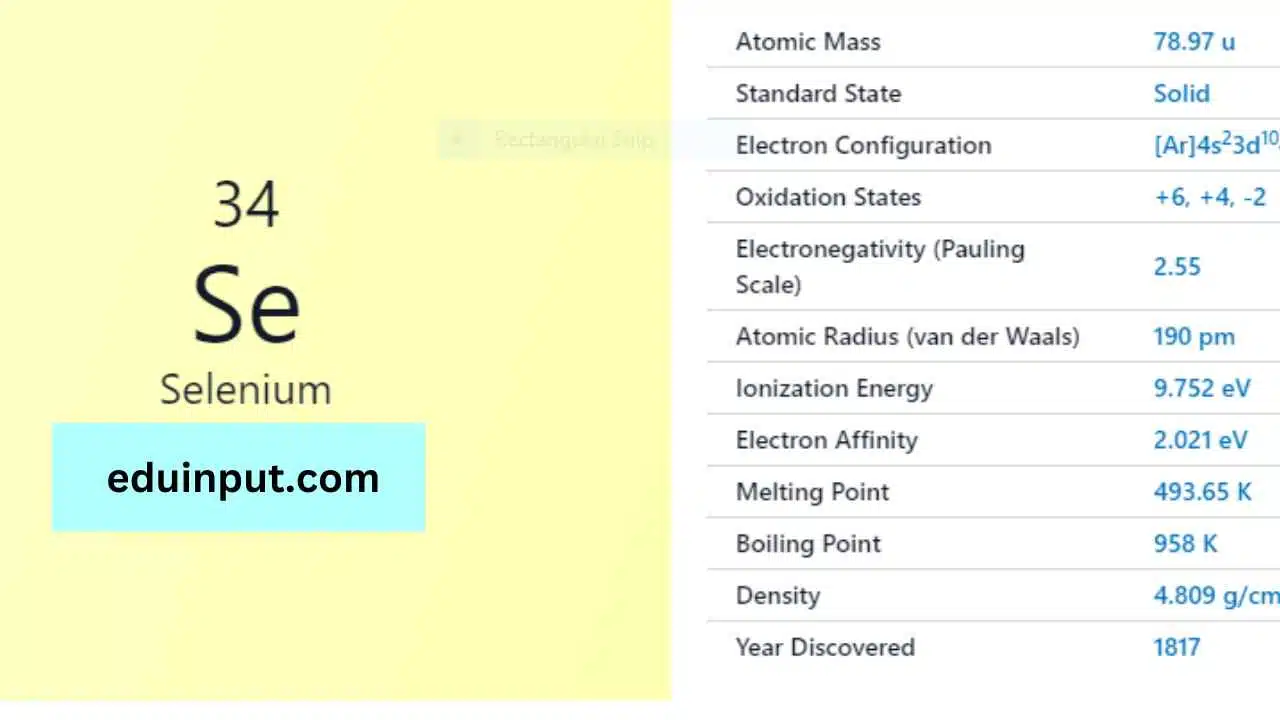Indium-Discovery, Properties, And Applications
Indium is a soft, silvery-white, rare metal that has the symbol In and atomic number 49. It is a member of the group of elements known as the post-transition metals. Indium is a relatively rare element and is one of the least abundant metals on earth.

| Property | Value |
| Name | Indium |
| Symbol | In |
| Atomic number | 49 |
| Relative atomic mass (Ar) | 114.818 |
| Standard state | Solid at 298 K |
| Appearance | Silvery lustrous grey |
| Classification | Metallic |
| Period in the periodic table | 13 |
| Group name | (none) |
| Period in periodic table | 5 |
| Block in periodic table | p |
| Shell structure | 2.8.18.18.3 |
| CAS Registry | 7440-74-6 |
Discovery
Indium was first discovered in 1863 by Ferdinand Reich and Hieronymous Theodor Richter while they were examining samples of the mineral zinc blend. The mineral had been obtained from the Freiberg Mining District in Germany.
Physical Properties
Indium has a melting point of 156.60 degrees Celsius and a boiling point of 2,072 degrees Celsius. It is a soft, malleable metal that can easily be cut with a knife. Indium is also a good conductor of both heat and electricity. Its color ranges from silvery-white to a bluish-gray.
Chemical Properties
Indium is a relatively reactive metal and reacts readily with most nonmetals. It is resistant to oxidation in air, although it will react with oxygen to form a thin oxide layer on its surface. Indium is also soluble in acids and will dissolve in hydrochloric acid, sulfuric acid, and nitric acid.
Facts
- Indium is used in a variety of applications including the production of LCD screens, and solar cells, and as a component in alloys.
- Indium is named after the indigo color seen in its atomic spectrum.
- Indium is a relatively soft metal and can be easily scratched or dented.
- Indium has no known biological function and is not known to be toxic.
Applications
Indium has a number of industrial applications due to its unique properties. One of its primary uses is in the production of LCD screens. Indium tin oxide is used as a transparent conductor in these screens. Indium is also used in the production of solar cells, where it is used as a transparent conductor to help capture sunlight. Other applications for indium include the production of solders, alloys, and as a component in semiconductors.







Leave a Reply